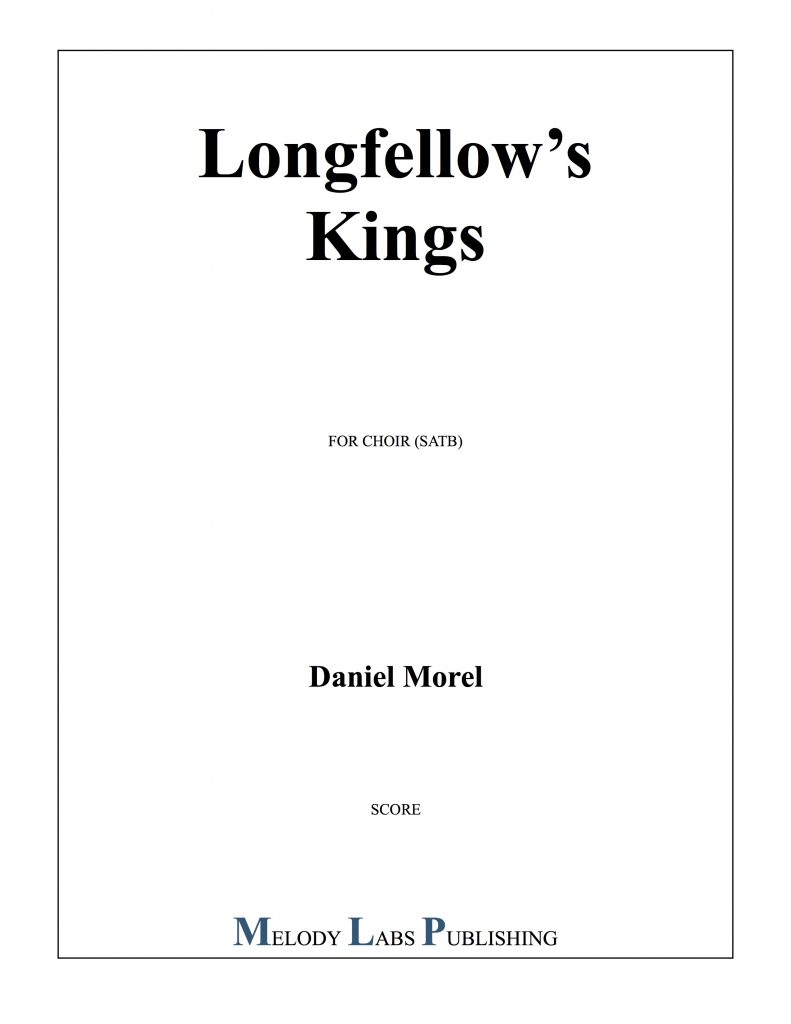
INSTRUMENTATION
SATB chorus and piano
DURATION
6′ 30″
TEXT
Henry Wadsworth Longfellow
Premiered by the Longfellow Chorus.
PROGRAM NOTES
Henry Wadsworth Longfellow’s intellectual prowess and worldliness can be seen in much of his poetry. Many of his works are devoted to the historical tales seldom taught, as is the case with the three poems used for Longfellow’s Kings. Haroun Al Raschid, Trisanku, and Jugurtha were all kings of ages long past (with quite colorful histories). Longfellow used these ancient figures as a catalyst to create wonderful, though somewhat somber, poetry. These poems address the misgivings of humanity, achievement, and immortality. Setting these poems, this collection works to convey the awesome nature of Longfellow’s ideas.
The first song sets a somber (if not caustic) tone, weighing the merit of worldly achievements against the ravages of time. Tension continues to build to the argument’s climax – “death is at the end!” The choir and piano build this tension through increased polyphony until “death” brings all voices to their homophonic peak, while the piano continues its alternating feel of 4/4 and 6/8.
The weight of the first song is replaced with a lush and quiet dissonance. Questioning the aspirations and misgivings of humanity, the second song sings of Trisanku, who remains, “in the air […] suspended,” due to his actions. Thus, in contrast to the polyphony of the first song, the choir remains suspended in homophonic dissonance, “midway between earth and heaven,” until its final, somewhat tenuous, resolution.
The final song sings the anguished cries of Jugurtha, whose fall is paralleled to that of the Poet, and “the vision, that lured him to follow.” The subjects’ angry cries are reflected in the severe vocal lines that quicken in a 6/8 tempo to almost frenetic heights. The song ends in a final burst, punctuating all thoughts on time, immortality, and the anquish of humanity.